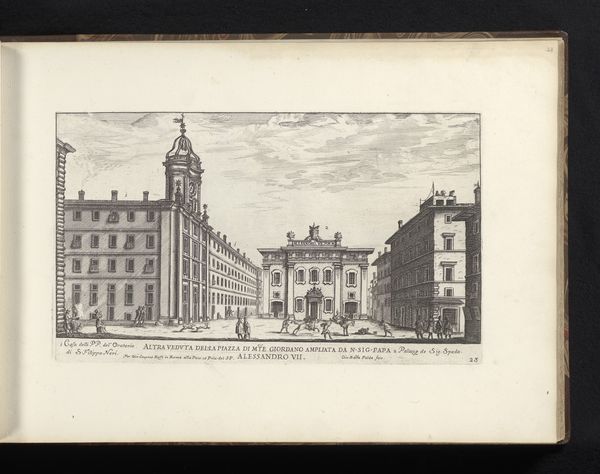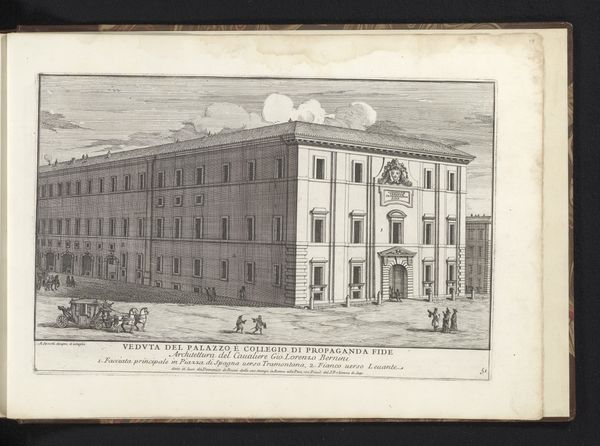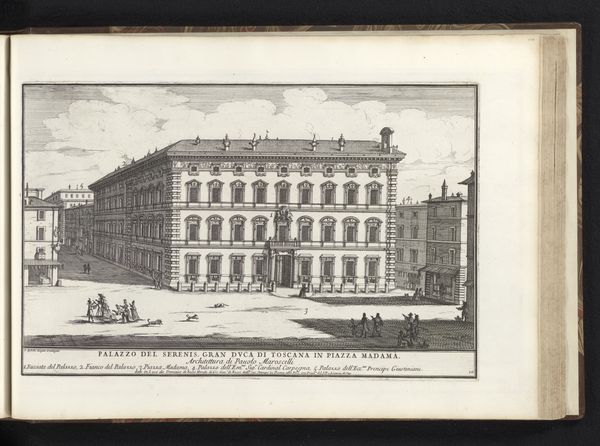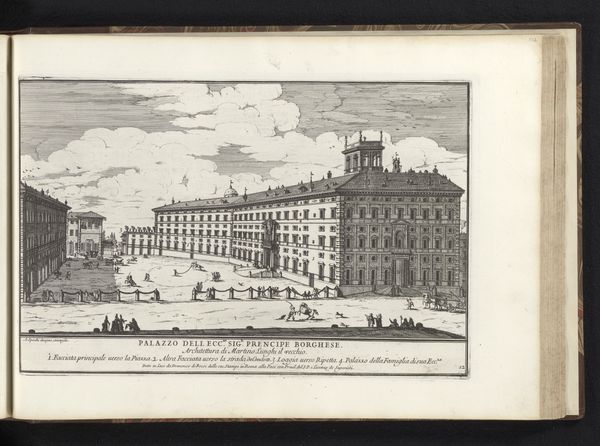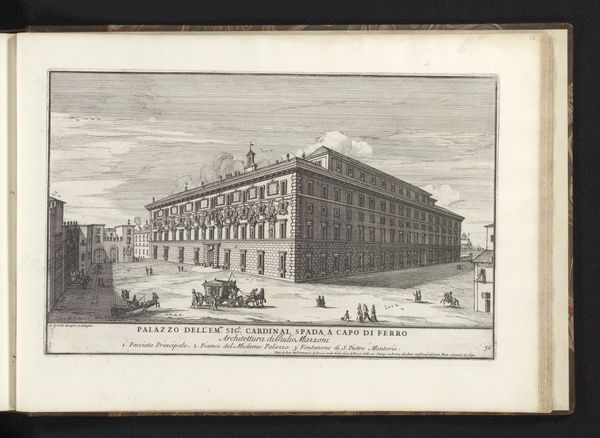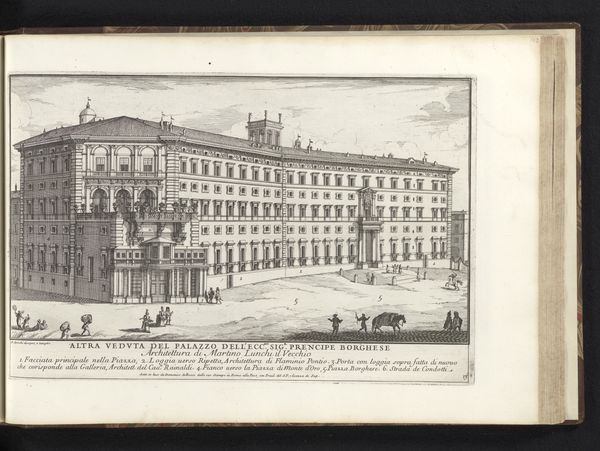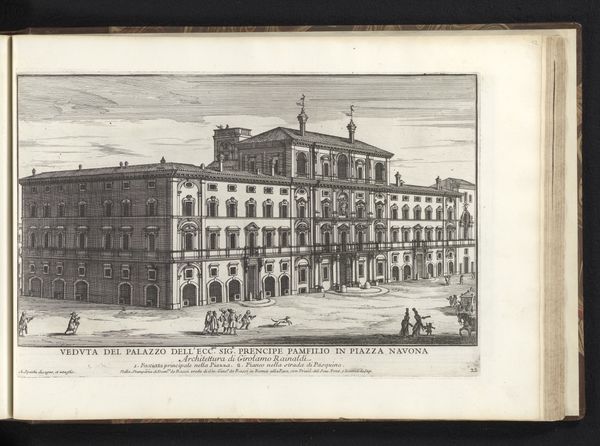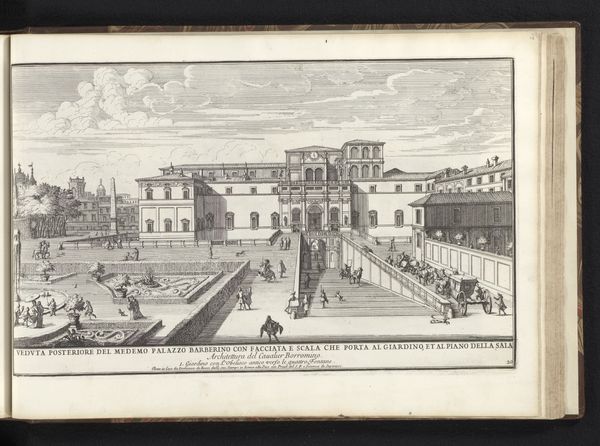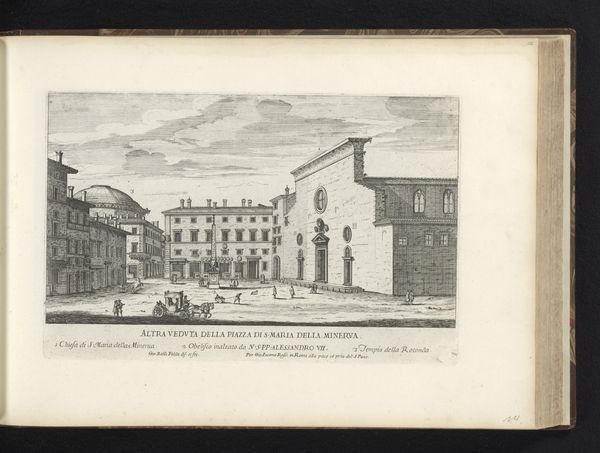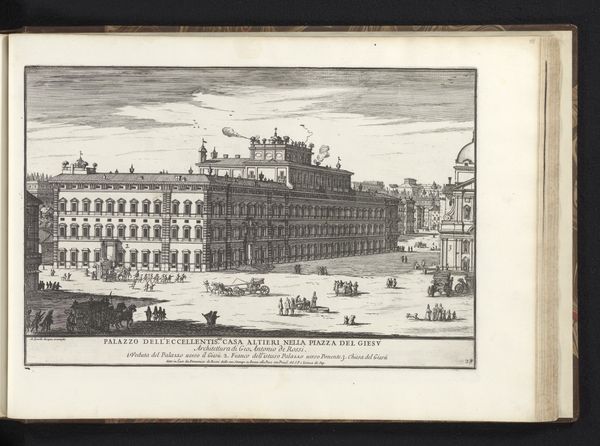
drawing, print, engraving, architecture
#
drawing
# print
#
perspective
#
cityscape
#
italian-renaissance
#
engraving
#
architecture
Dimensions: height 218 mm, width 330 mm
Copyright: Rijks Museum: Open Domain
This print, made by Alessandro Specchi in the early 18th century, depicts the courtyard of Palazzo Montecitorio in Rome. It's rendered in etching, a printmaking process involving biting lines into a metal plate with acid, inking the plate, and pressing it onto paper. The material properties of etching – its capacity for fine detail and tonal variation – allowed Specchi to capture the grandeur of Carlo Fontana’s architecture. Notice how the crisp lines define the perspective, drawing the viewer's eye into the space. Etching was crucial in disseminating architectural ideas at this time, making designs accessible to a wider audience. The print itself can be understood as a commodity, produced and sold in multiples. Consider the labor involved: the skilled artisan carefully incising the plate, the printer operating the press. This reflects a highly developed division of labor and the commercialization of art in early modern Europe. Appreciating this historical and material context enriches our understanding, challenging the notion of art as purely individual expression.
Comments
No comments
Be the first to comment and join the conversation on the ultimate creative platform.
